![]()
| The | World of the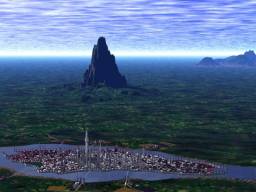 |
Wheel |
"The Wheel of Time turns, and ages come and go, leaving memories that become legend. |
So begins each day within the "World of the Wheel" , a universe in which the |
by: Robert Jordan
����Series: Currently seven books (with more planned) starting with "The Eye of the World" through "A Crown of Swords". One age dies, another age unfolds, and the web of fate shapes events as each cycle reincarnates old heroes and villains in new flesh. Imprisoned throughout the changing of the years is the DARK ONE, fastened by magic in his mountain prison, Shayol Ghul. He yearns to escape and break all that has escaped his grasp, while his minions scour the land subverting, manipulating and otherwise enforcing his dark will.
���Enter Rand al'Thor, farm boy.
���He has no comprehension of the events outside his little village. But when a mysterious woman arrives to open his eyes to the approaching evil, Rand and his friends set out on a quest that will forever change the world. You see, Rand is the Dragon Reborn, the most powerful male sorcerer to live during this age. He's got the power to level whole cities, erase history, to challenge the DARK ONE himself -- except it's slowly driving him insane.
 (The
(The  The Wheel of Time Alliance |
 ALZHEIM'S WOT Music Pages |
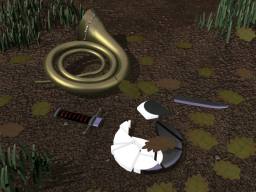
Long ago, according to Legend, the Horn of Valere was hidden to keep it safe until it was needed in the Last Battle. The Horn is much more than a musical instrument, for it can call back the dead heroes from the grave to fight against the Shadow. On it is the inscription Tia mi aven Moridin isainde vadin, in the Old Tongue: The grave is no bar to my call. Prophecy states that it will be found in time for the Last Battle. Between the end of the Trolloc Wars and the beginning of the War of the Hundred Years, a hunt was called. Many heroes searched for the Horn, and though none found it, their stories became legends that are now part of the Great Hunt of the Horn, a bardic cycle that takes several days to tell in its entirety. |
Almost four hundred years after the last hunt, a new hunt was called in Illian on the Feast of Teven. Hunters gathered from every nation of the world to seek the Horn, or at least immortality in story and song. The city celebrated their coming adventures with a grand carnival of costumes, fireworks, song, dance, and the telling of legends. Prizes were given to gleeman, the greatest prize going for the best telling of the Hunt cycle. The Hunters were sworn to their quest and sent forth from Illian with much pomp and circumstance. |
Since the heroes departure there have been rumor of the Horn appearing in Shienar, and in Falme some said they saw an army of heroes from legend charging to the song of a triumphant Horn, but no one has yet returned the Horn to Illian. |
| " You may have any place you wish, so long as it is not larger than mine! " - Fateful words of the first King of Illian |
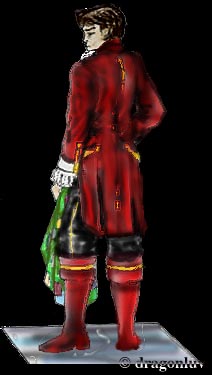 |
Thought by some to be the man among the Forsaken with the most unusual reason
for turning to the Shadow, Joar Addam Nessosin, a dark eyed, dark haired,
handsome man, was an acclaimed composer before the War
of the Shadow. Born in the small port city of Shorelle (unknown
location), he was a child prodigy, in both composition and performance
on a wide range of instruments: shama; balfone; corea; obaen; but
of all these instruments, nothing remains but their names.
Joar Addam never fulfilled his early promise, at least never to the
extent expected. Works he composed while as young as fifteen were
performed in many of the great cities of the world, but he never
rose to the exulted heights that many had foretold, and was never
ranked among the greatest composers of the Age. It is reliably reported that
his reason for dedicating his soul to the Shadow was the
promise of immortality. With eternity at his disposal, surely
he would reach that greatness and, perhaps even more important,
the recognition of it that had eluded him.
It is believed that he never held any field commands, though he did take part in a number of battles on some level, and he served as a governor of conquered areas. By and large, his administrations were not particularly horrific compared with others of the Forsaken, though it should be remembered that all the Forsaken did such things as allow Mesaana's mobs of children free rein, cooperate with Aginor's "harvesters" to gather people, and make men, women, and children available rations for Trolloc garrisons. The one atrocity which was specifically his, has been overlooked by some historians because it involved fewer people. It should not be. Artists of all sorts of whom he disapproved were blinded and/or otherwise maimed. Any artist - writer, musician, any at all - could become an object of Asmodean's displeasure, but it was most particularly aimed at musicians and composers who had been considered his rivals before the war. The horror of this can only be compounded by the fact that there was no torture involved, as such; the unfortunate was simply made incapable of producing his or her art again and then released. |
After escaping the Bore, he allied uneasily with Lanfear, posing as the bard Jasin Natael, until she trapped him into becoming a teacher for Rand al'Thor. He died in Caemlyn, killer unknown!
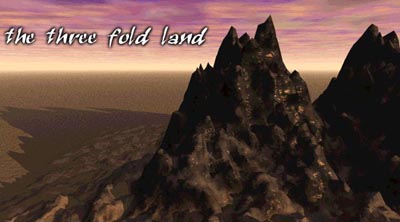
|
East of the Dragonwall and west of the cliffs and chasms of Shara lies the Aiel Waste. Called Djevik K'Shar, "The Dying Ground" in the Trolloc tongue, it is a harsh, rugged, and all but waterless land that appears uninhabitable. Yet this Waste is home to the Aiel, a race of people as fierce and hardy as their rugged environment. These tall and fair-haired people are lethal fighters and skilled trackers, with both men and women serving as warriors. Believed to be the most deadly fighters on the continent, if not in the world, they veil their faces before they kill and have established a well-earned reputation for defending their land from outsiders. They call the Waste the "Three Fold Land", for they believe it is first a shaping stone to make them; second, a testing ground to prove their worth; and third, a punishment for their sin -- though the exact sin is apparently unknown. Only those select few on friendly terms with the Aiel dare to enter the Waste: peddlers, gleeman, and the Tuatha'an Tinkers. At one time the merchants of Cairhien were also welcomed, but that welcome was revoked when Laman destroyed Avendoraldera. Everyone else is considered an enemy. |
The Aiel were not always a warrior people. Recently discovered historical information reveals that the Aiel not only evolved their warlike tendencies after the Breaking, but are actually related to the peaceful Tuatha'an, whom they avoid, but never harm. |
| "Till shade is gone, till water is gone,
into the Shadow with teeth bared, screaming defiance with the last breath, to spit in Sightblinder's eye on the last Day." - Aiel Oath |
| Malkier - Lan Mandragoran |
| The lost Borderland nation, Malkier, once thrived under the
banner of the Golden Crane. It is known for its necklace
of a thousand lakes and its seven great towers as well
as its heroes. Now the only remnant of that nation outside the Blight is its Uncrowned King, al'Lan Mandragoran, son of the last reigning king, al'Akir Mandragoran, and heir to the lost throne. Malkier fell to the Blight in 953 NE, the year Lan was born. Though he was an infant, his parents anointed him Dai Shan, (Diademed Battle Lord), and consecrated him King. The ancient sword of the Malkieri Kings, a power-wrought blade, was given to him. His life was sworn: "to stand against the Shadow so long as iron is hard and stone abides. To defend the Malkieri while one drop of blood remains, and to avenge what cannot be defended." They then sent him out of the doomed nation, with many buying his safety with their lives, while they faced their last battle. |
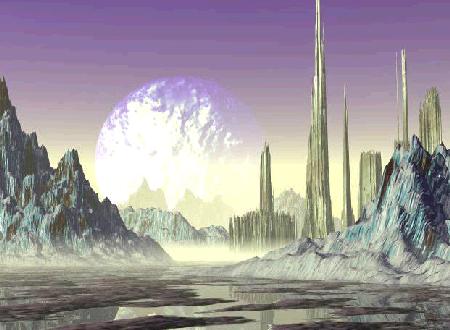 |
The child was taken in and raised by the Shienarans.
He never forgot his oath. At the age of sixteen be began a one-man war
against the Blight and the Shadow. Called Aan'allein or
"Man Who Is an Entire People," wielding his power-wrought
blade, Lan became a Blademaster. He probably would have continued his hopeless fight unto death but for the intervention of Moraine Sedai in 979 NE. Somehow she convinced him that his purpose would be better served as her Warder, and bonded him. |
"Time to dance with Jak o' the Shadows"
- Band of the Red Hand
 |
If you don't have the Crescendo Midi Player, go to Liveupdate.com and get the proper plugin for your browser. |
 |